Jump to Directions
Did you discover some sprouting onions in your produce basket? Learn how to plant a sprouted onion in your garden in this easy gardening tutorial.
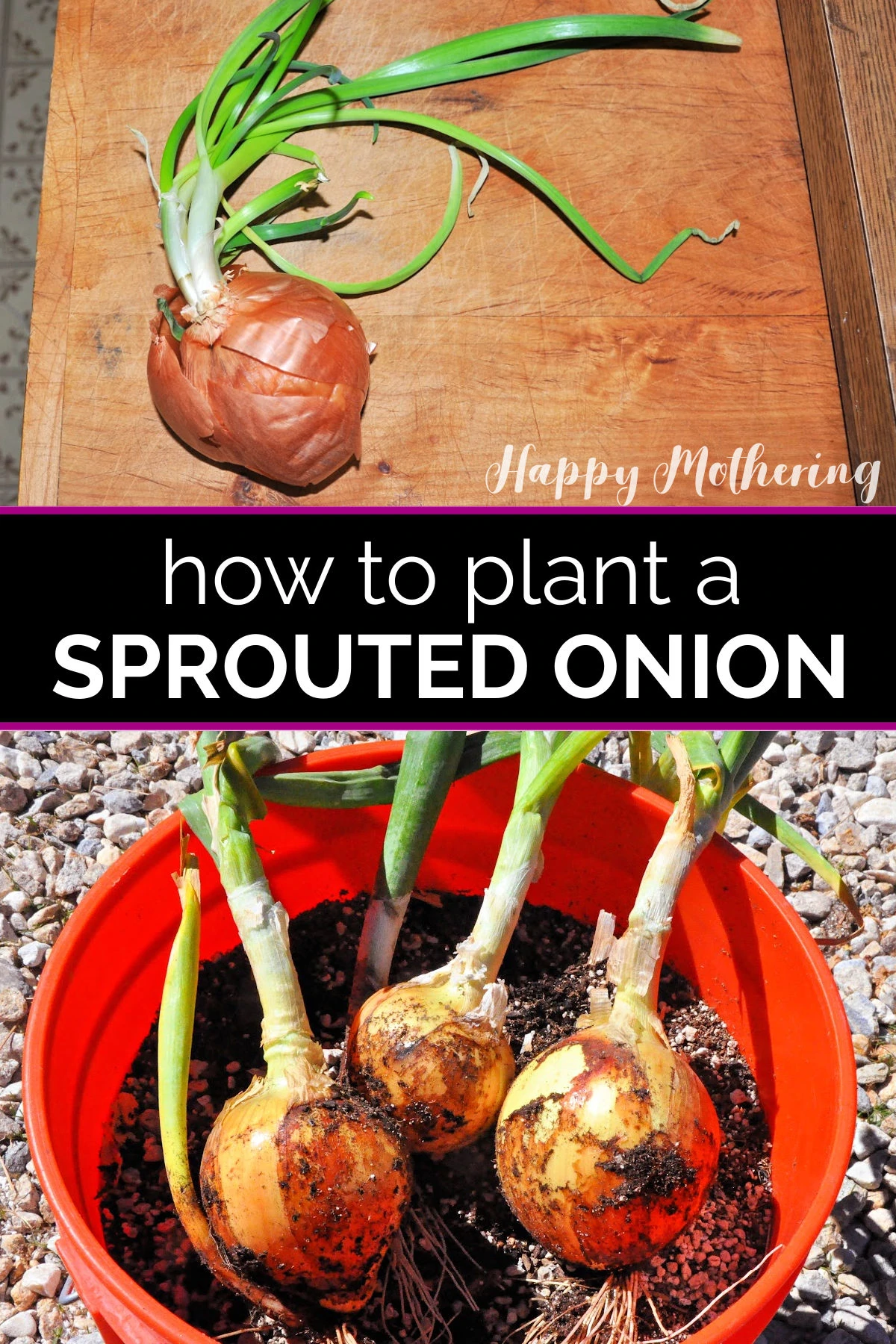
Many years ago, I figured out how to plant an onion that has sprouted in my garden to grow a brand new onion. Thousands of people have followed this tutorial to do the same.
Of course, you can grow your own onions from seed, get onion seedlings from your local garden center or go the super easy route and use onion sets from last season… but it’s so much fun to re-grow sprouted onions!
Follow our simple process and you’ll be able to grow a brand new onion in your garden! It’s a fun and easy activity to do as a family.
- What You’ll Need to Plant an Onion
- By the Numbers: How to Plant a Sprouted Onion
- Tips for Planting Sprouted Onions.
- 1. How often should I change the water?
- 2. Does this work with onions from the grocery store?
- 3. What types of onions work best?
- 4. Can you re-grow Green Onions?
- 5. Can you plant onions that haven’t sprouted?
- 6. Can you plant a rotten onion that has sprouted?
- 7. Why can’t I just plant a whole onion?
- 8. Container gardening and proper soil aeration.
- 9. How much room is needed when planting onions?
- 10. What time of the year do you plant onions?
- 11. How much sunlight do onions need?
- 12. How to do you know they’re ready to pick?
- 13. Eco-friendly tip: Recycle water!!!
- 14. Best way to store onions so they don’t sprout?
- 15. How to make this educational?
- 16. What time of the year do I plant all of my vegetables?
- 17. Best Recipes to Use Onions?
- How to Plant a Sprouted Onion (Printable Instructions)
- More Easy Gardening Tips & Tutorials
What You’ll Need to Plant an Onion
- Sprouted onion(s)
- Soil-filled container (or garden)
- Knife
- Cutting Board
- Bowl of Water
By the Numbers: How to Plant a Sprouted Onion
Follow these simple steps to learn how to grow your own onions from a sprouted onion (no onion seeds needed).
Step 1: Cut the Onion Lengthwise.
Using a sharp knife, carefully cut into your onion lengthwise to expose the center sprout. Be careful not to cut into the sprout or through the root of the onion. You want to preserve the sprout as best as you can.
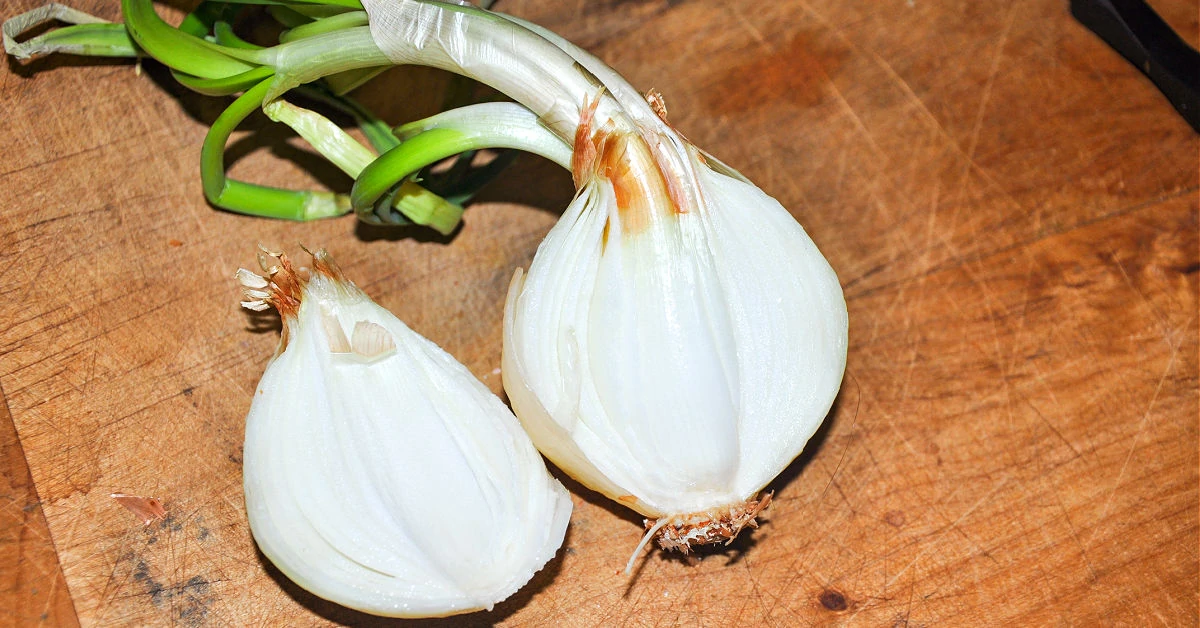
Step 2: Remove Sprouts from Onion.
Next, peel away the onion’s outer layers until only the center sprout is remaining. If there are multiple sprouts like this one all stuck together, carefully separate them into individual onion sprouts.
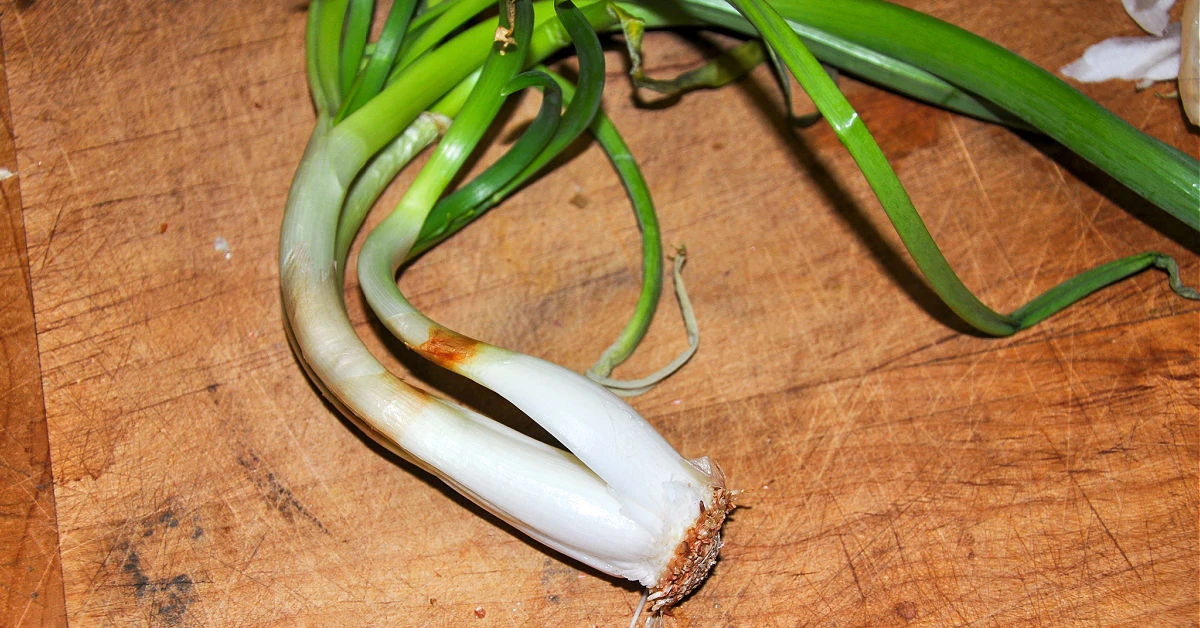
As long as the outer layers of the onion are still firm, you can eat them. If they’re soft, discard them into the trash or put them in your compost pile.
Step 3: Sprout Roots in Water.
Once you have your onion sprouts separated, place them into a cup or bowl of water and leave them there until you see new roots start to shoot out. The new growth you see is the beginnings of your new onion’s roots.
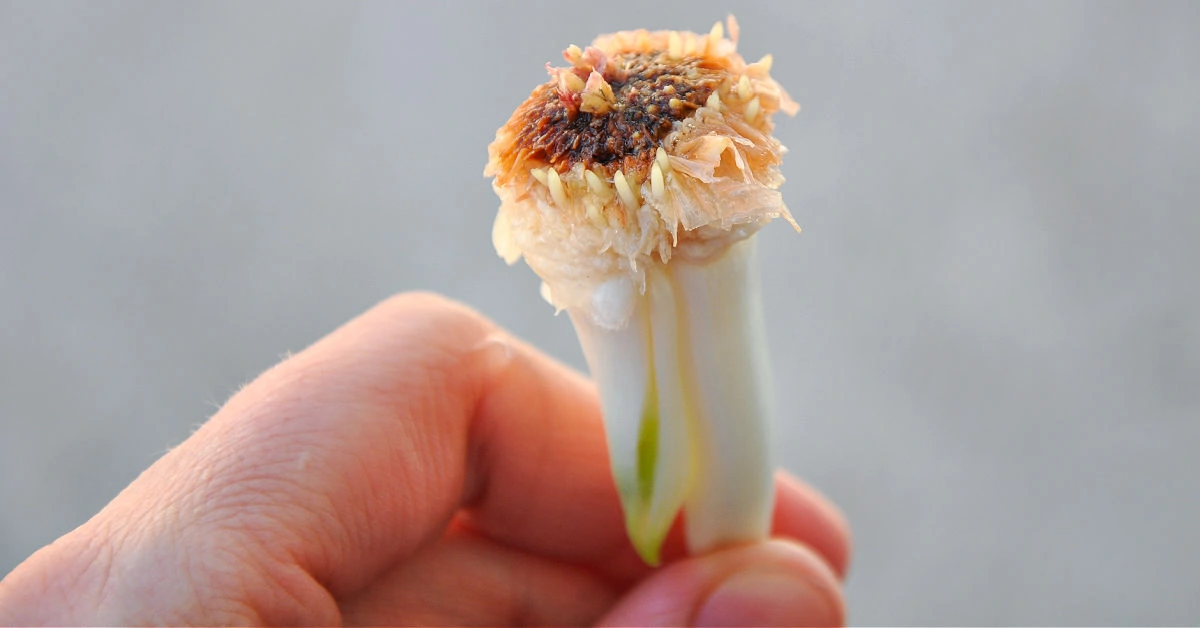
I like to leave my sprouts in the water until they’re a bit longer before I transplant the onion sprout into a pot.
Step 4: Transplant Onion Sprout.
After the roots are looking good, it’s time to plant the onion into the ground or a container full of good potting soil with the root end down.
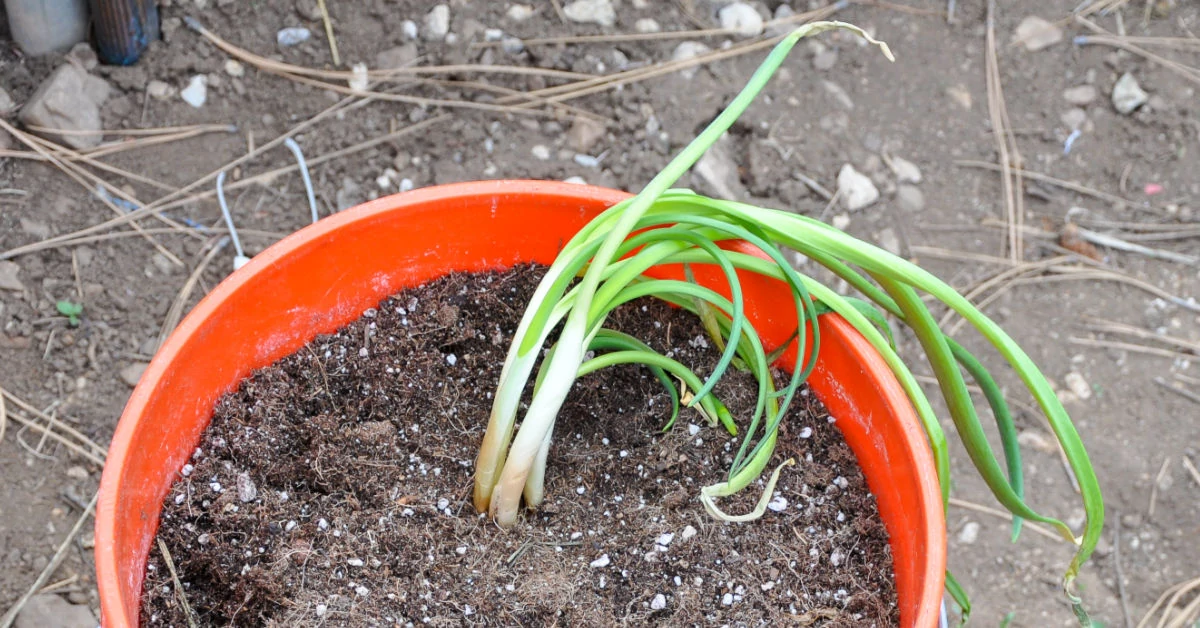
I didn’t separate these sprouts before planting them, and the onions grew together more than I’d like. Take my lesson and separate all of the sprouts before planting. In addition to odd-shaped onions, they’re more at risk for molding under the soil if they’re too close together.
Step 5: Grow & Harvest New Onions.
After they’re planted, you’ll want to let your onions grow through the season if you want a full-sized bulb. You can usually tell that the onion plants are done growing when you see the bulb emerge from the soil and the green leaves / shoots start to wilt and brown.
If you leave them too long, the onion bulbs will soften and rot. If you pull them at the right time, you’ll have beautiful new onion bulbs that you grew practically for free!
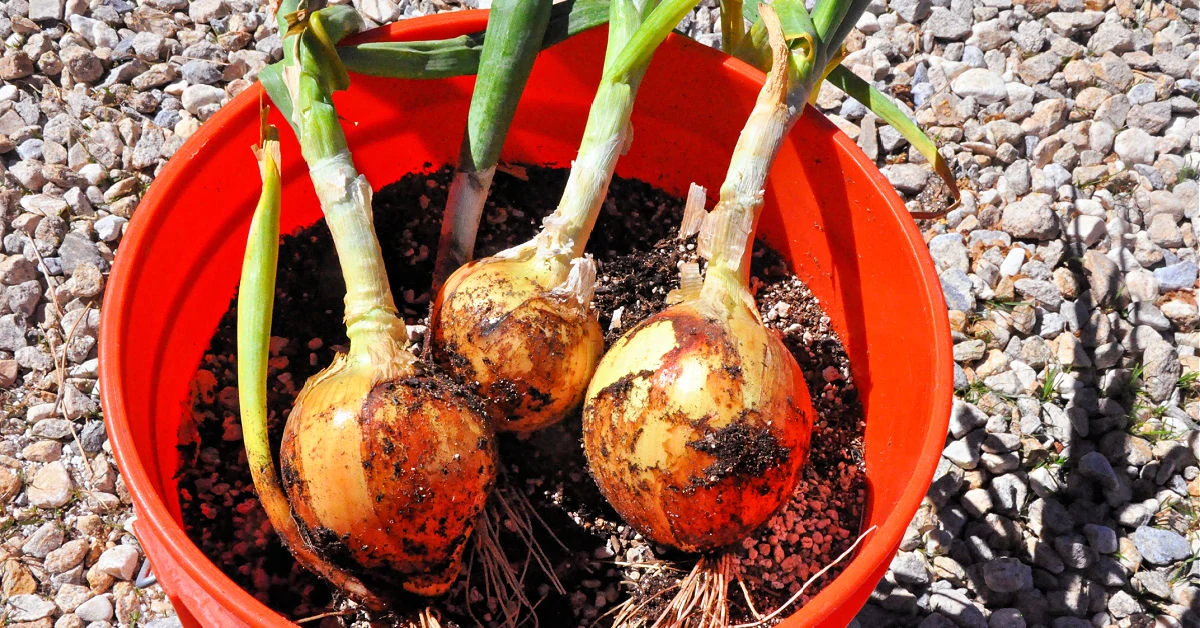
Tips for Planting Sprouted Onions.
Answers to all of your questions about planting a sprouted onion in your backyard garden or container garden.
1. How often should I change the water?
Before planting the onions, you should change the water the roots are growing in once every 24-36 hours. If you let it go much longer than that, the water stagnates and can cause the onion or roots to rot.
2. Does this work with onions from the grocery store?
Absolutely, I have planted a ton of sprouted onions from the local market in our garden and in containers. They work great!
3. What types of onions work best?
White, yellow, red, Vidalia, sweet… it doesn’t really matter. It’s pretty much the same concept for all varieties of onion.
4. Can you re-grow Green Onions?
Yes, you can regrow green onion scraps too. You eat the green tops of the scallions and grow from the roots. I show you step-by-step how in my blog post on re-growing green onions.
5. Can you plant onions that haven’t sprouted?
Over the years, I’ve found that you can also cut the center out of onions that haven’t started fully sprouting and regrow them! Just be very careful not to cut through the roots of the onion.
6. Can you plant a rotten onion that has sprouted?
Even if the onion is sprouting, if there are any black or rotten spots on the onion… just throw it away. If there are just a few brown spots or the layers of the onion are soft or a little mushy, but not rotten, you can use usually replant the sprout as long as it’s still firm.
7. Why can’t I just plant a whole onion?
I have tried planting whole onions, and I find that they have a higher tendency to rot in garden soil compared to planting just the sprout. I don’t recommend it.
8. Container gardening and proper soil aeration.
Mixing in perlite, silica stones, small lava rock, small gravel, expanded clay pellets, coco coir or anything like that will help with drainage. This will help keep the soil from getting compacted, which will help bring oxygen to the plant’s roots and help the plant grow bigger.
A great ratio of perlite is 20-30% perlite to the soil. This will give good drainage while not drying the soil out too fast. I recommend watering your onions every 2-4 days, depending on your soil drainage.
Please do not overwater them… or they will rot.
9. How much room is needed when planting onions?
Regardless if they’re in the ground or in a container, you’ll want to make sure they’re 6-8″ from center apart. From my experience this allows the onions to have the space to grow larger.
10. What time of the year do you plant onions?
Onions are one cold-hardy crop that can usually be planted before the last frost. They do best in temperatures ranging from 50-75˚ F, but most varieties can handle temps all the way down to 20˚ F.
You can usually plan to plant them around 4-6 weeks before the last expected frost date (you can see 1st and last expected frosts in the different US zones on Morning Chores).
If you’re planting them in your garden outdoors, it’s best to plant them as soon as your soil is tillable in the early spring if you want a summer harvest.
If you have a short growing season and the ground doesn’t thaw until late spring or early summer, you can get a head start on your onion bed by starting them indoors in small containers, then transplanting them as onions need a long growing time to form large bulbs.
One great thing about planting onions in containers is that you can grow them year-round by taking them in and out of the house or even placing them near a sunny window if the ground is frozen.
11. How much sunlight do onions need?
For best results, plant your onions in full sun in your garden bed (they need 13-16 hours of sunlight daily while the bulbs are forming).
12. How to do you know they’re ready to pick?
You’ll notice that the green shoots and flower head starts to turn brown and wilt. Once that happens, it’s time to pick the onion before it begins molding and rots away.
If you want spring onions, be sure to pick the onion when you can see the top of the onion bulb above the soil, but before the green sprouts turn brown.
13. Eco-friendly tip: Recycle water!!!
If your family uses all-natural soap, shampoo, face wash and other beauty products, your shower water runoff is also a great source of a little bit of extra nutrients for your onion plants.
Keeping two 5-gallon buckets in your shower and catching your shower runoff is a great way to water your garden plants as well.
14. Best way to store onions so they don’t sprout?
It’s best to store onions in a dark, cool, dry place like a dark cabinet or pantry. If they’re kept near a sunny window, they’ll be more likely to sprout sooner than if you use proper storage techniques.
15. How to make this educational?
We like to make everything a learning experience in our home. If you have young kids, check out our free Kids Gardening Journal so your kids can document their onion’s growth!
16. What time of the year do I plant all of my vegetables?
If you would like to learn what time of the year to plant all of your vegetables, I highly recommend Pam Farley’s Vegetable Garden Planting Schedules. It’s a must for every gardener!!!
17. Best Recipes to Use Onions?
Onions are used in so many recipes! They are super versatile since they can be eaten cooked or raw. Here are some of my favorite recipes that use onion as an ingredient:
- Homemade Ranch Dressing
- Revuelto Gramajo
- Instant Pot Chicken Noodle Soup
- Gluten Free Chicken Pot Pie Casserole
- Authentic Mexican Guacamole
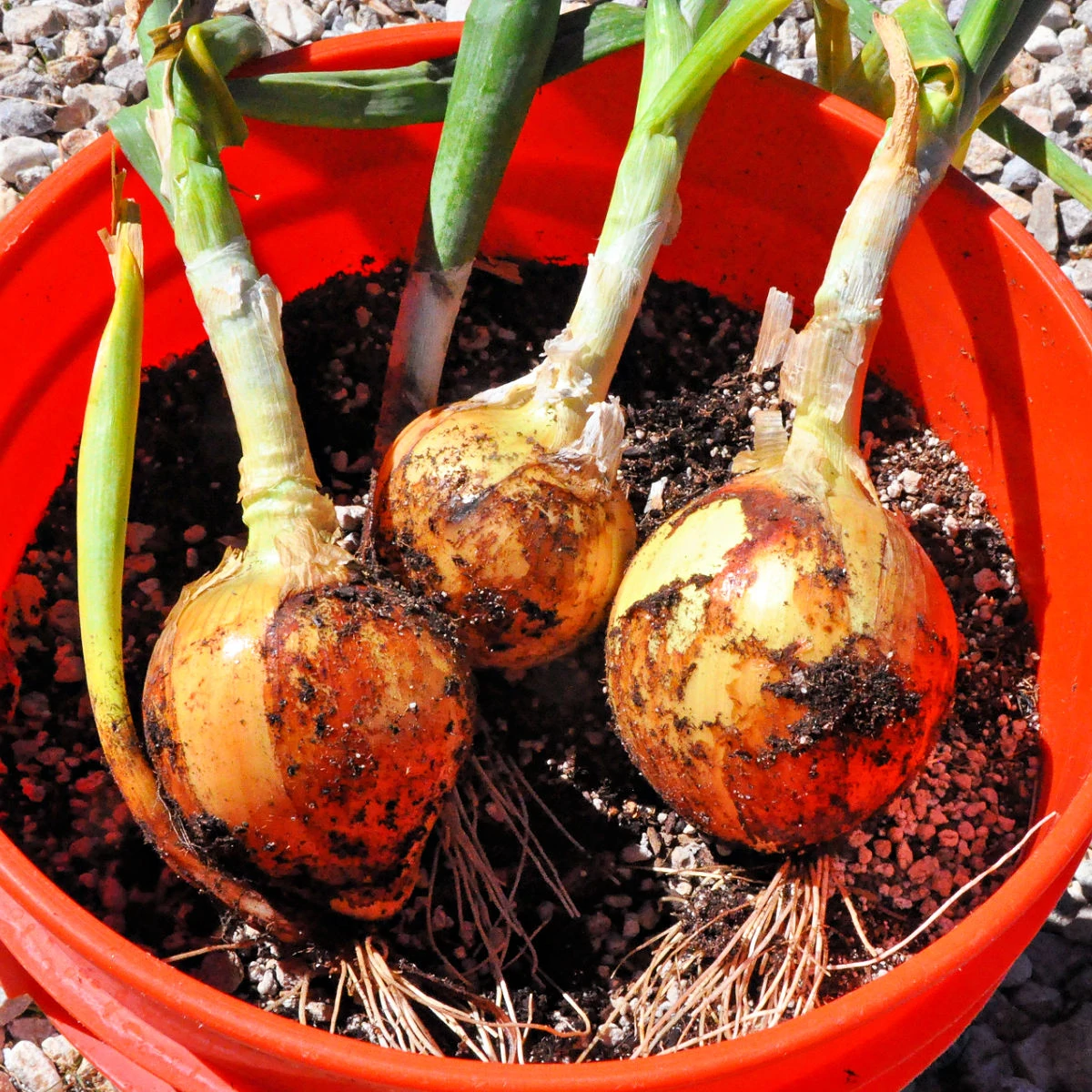
How to Plant a Sprouted Onion (Printable Instructions)
Supplies
- Sprouted onion
- Small glass of water
- Garden bed - or 5-gallon buckets filled with potting soil
Tools
- Cutting Board
- Knife
Instructions
- Slice carefully into the onion lengthwise to expose the center sprout. Be careful not to cut through the root of the onion.
- Begin peeling away the onion's layers, until you just have the center sprout remaining. If there are multiple sprouts like this one, separate them into individual onion sprouts.
- Place the onion stem into a small container of water and give it a few days for new white roots to start sprouting.
- Once you have roots developed, transplant the onion into the ground or a container filled with quality potting soil with the root end down. It's best to plant the sprouts further apart from each other than pictured.
- Let them grow through the gardening season. Onion plants are done growing when the bulb emerges from the ground and the green sprout starts to wilt and brown. Pull and enjoy your new onions.

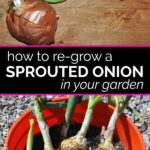
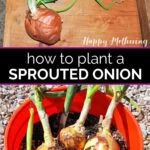
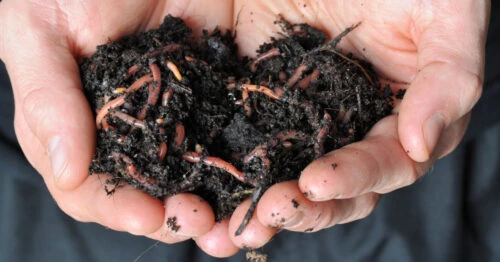
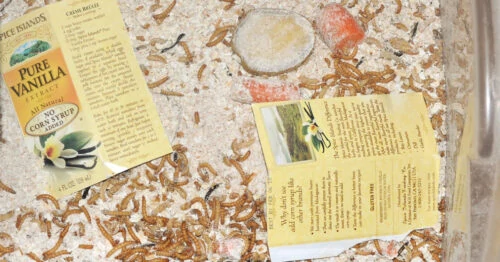
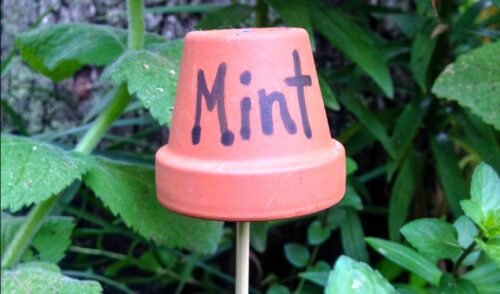
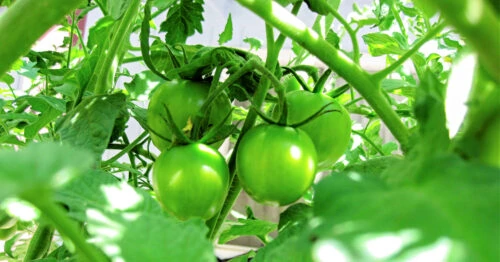
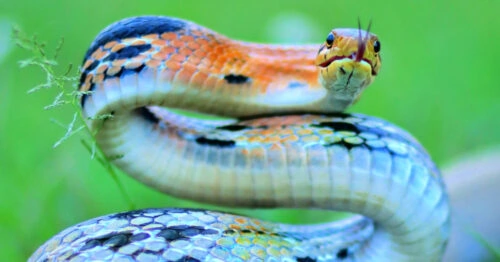

Do you know you can grow garlic. Only with a half of a globe. Plant it and it will grow a whole blub. I used to do it all the time.
Yes, we did that one year too. I ordered starter garlic and it was a lot of fun to grow!
How far into the dirt do you plant the onion sprouts? Just cover the roots? Thanks, excited to try!
Hi Franchesca, they don’t need to be planted very deep. Usually about one inch is sufficient. Good luck!
I love planting sprouted onions! They are so easy to grow and so delicious!
I’m glad to hear you’re having fun planting sprouted onions Lakshay! That’s awesome!
I love planting sprouted onions! They are so easy to grow and so delicious!
Sprouted onions are one of my favorite things to regrow too!
If there are two sprouts on the one onion, do you cut through the root when separating them so they both have some root?
Good question. I’ve tried it both ways and I recommend separating them very carefully. If you don’t, I find that 2 onions grow very closely together and are kind of soft on the side where they touch.
I cut the top (green part) of a sprouted onion. It seems to be growing and I have put it in water. Do you know if it is likely this will grow roots?
I’m not sure if that’ll work as the roots typically grow from the bottom part of the onion sprout. I’d love to hear how it goes for you, though!
I got 8 to 10 sprouts from my videla onions from my yearly purchase. rooted them and planted. Now i’m watching them grow. used containers perfect!!!
That’s wonderful – thanks for sharing!